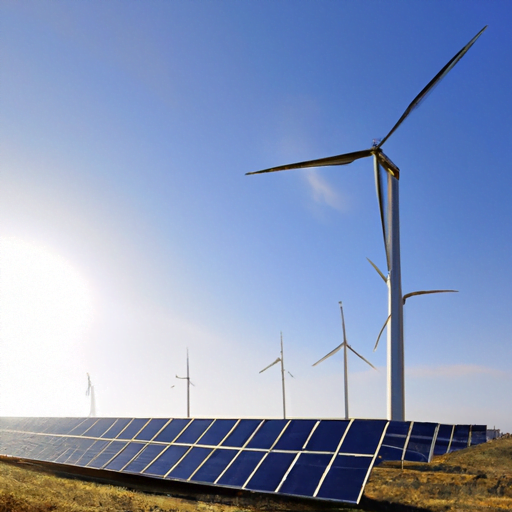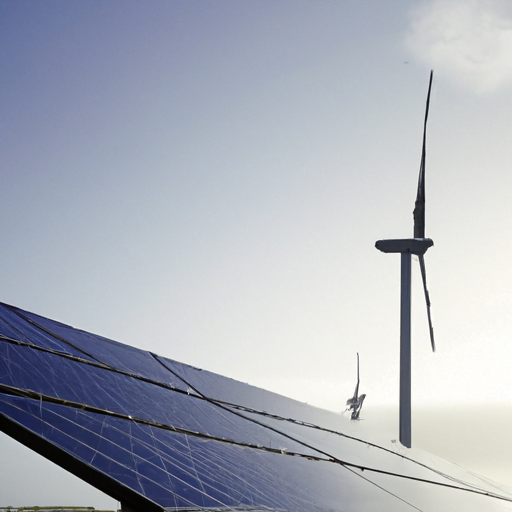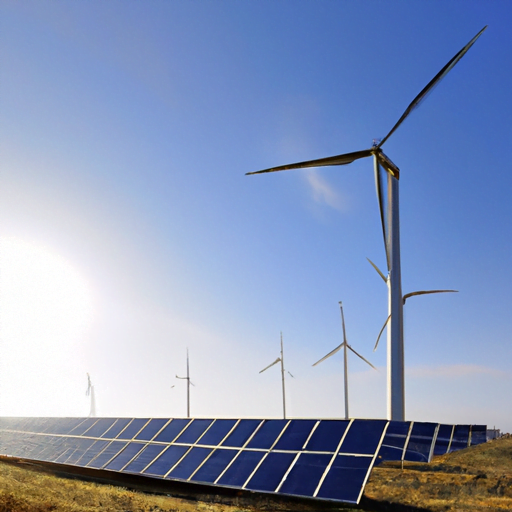Have you ever wondered about the benefits of on-grid renewable energy systems? It’s a topic that has gained a lot of attention in recent years, as more and more people are looking for sustainable ways to lower their energy costs and reduce their carbon footprint. In this article, we will explore the advantages of on-grid renewable energy systems and how they can benefit you and the environment. So, if you’re curious to learn more about this exciting technology, keep reading!
On-grid renewable energy systems, also known as grid-tied systems, are connected to the main electricity grid. This means that you can still rely on the grid for electricity when your renewable energy source isn’t producing enough power, such as during nighttime or periods of low sunlight. However, when your renewable energy system is generating surplus electricity, you can actually sell it back to the grid, earning credits or money for the energy you contribute. Not only does this help reduce your electricity bills, but it also promotes the use of clean, sustainable energy.
One major benefit of on-grid renewable energy systems is their ability to reduce your dependence on fossil fuels. By generating your own electricity from renewable sources like solar panels or wind turbines, you can lessen your reliance on non-renewable energy sources like coal or gas. This is not only good for the environment, as it reduces greenhouse gas emissions, but it also helps to create a more sustainable and resilient energy system. Additionally, on-grid systems help to stabilize the power grid by providing a consistent and reliable source of electricity.
Furthermore, on-grid renewable energy systems can provide financial benefits in the long run. While the initial cost of installing these systems may seem high, you can actually save money over time through reduced electricity bills and the potential for selling surplus energy back to the grid. In some regions, governments and utilities offer incentives and financial support to encourage the adoption of renewable energy systems, making it even more cost-effective. Additionally, investing in renewable energy can increase the value of your property, making it a wise long-term investment.
In conclusion, on-grid renewable energy systems offer numerous benefits, from reducing your dependence on fossil fuels and lowering your electricity bills to promoting sustainability and contributing to a more stable power grid. By harnessing the power of renewable sources like solar or wind, you can not only save money but also make a positive impact on the environment. So, if you’re considering going green and exploring renewable energy options, on-grid systems may be the perfect fit for you. Exploring the Benefits of On-Grid Renewable Energy Systems

Introduction
In today’s world, the increasing demand for energy and the adverse effects of climate change have necessitated the exploration of alternative and sustainable sources of power. Renewable energy systems, particularly on-grid solutions, have emerged as viable alternatives to traditional fossil fuel-based electricity generation. By harnessing the natural elements such as sunlight and wind, on-grid renewable energy systems offer numerous benefits that not only contribute to a cleaner and greener environment but also provide significant advantages for individuals, communities, and the economy as a whole. This article aims to delve into the various advantages of on-grid renewable energy systems and highlight their potential in addressing our current energy needs, while also protecting the planet for future generations.
Reduced Energy Costs
One of the primary benefits of on-grid renewable energy systems is the potential to reduce energy costs for consumers. Unlike conventional electricity sources, which are usually subject to price fluctuations and geopolitical tensions, renewable energy sources, such as solar and wind, are abundantly available and inherently free. By installing solar panels or wind turbines for on-grid electricity generation, you can significantly reduce your dependence on costly fossil fuels and, over time, even produce surplus electricity that can be sold back to the grid. This not only helps offset your energy bills but also provides a potential stream of income, making renewable energy systems a financially attractive option.
Environmental Sustainability
The environmental benefits of on-grid renewable energy systems are perhaps the most widely acknowledged advantages. By opting for clean energy alternatives, we can significantly reduce our carbon footprint and mitigate the effects of climate change. Fossil fuel-based power plants emit substantial amounts of greenhouse gases, contributing to global warming. On the other hand, on-grid renewable energy systems generate electricity without releasing harmful pollutants or greenhouse gases. Solar panels convert sunlight into electricity through a clean and sustainable process, while wind turbines harness the power of wind to generate power without depleting natural resources. By embracing on-grid renewable energy systems, we can contribute to a sustainable future and protect the environment for generations to come.
Reliable Power Supply
Contrary to popular belief, on-grid renewable energy systems offer a reliable source of power. Advancements in technology and increased investment in renewable energy infrastructure have significantly improved the efficiency and reliability of clean energy systems. Solar panels and wind turbines are now equipped with storage options such as batteries, allowing for a continuous supply of electricity even during periods of low sunlight or wind. Furthermore, on-grid systems are inherently connected to the power grid, providing a backup supply of electricity when needed. This integration with the existing power grid ensures a consistent power supply, making on-grid renewable energy systems a dependable choice for both residential and commercial consumers.

Integration into Existing Grid
One of the key advantages of on-grid renewable energy systems is their seamless integration into the existing power grid. Unlike off-grid systems that operate in isolation, on-grid systems are connected to the main electricity network. This integration allows for a smooth transition from traditional energy sources to renewable energy, as the existing infrastructure can accommodate the influx of clean energy. With the assistance of net metering, surplus electricity generated by on-grid systems can be fed back into the grid, ensuring efficient use of resources and reducing wastage. This integration also facilitates the sharing of renewable energy among neighboring households or businesses, further enhancing the sustainability and affordability of clean energy.
Job Creation and Economic Benefits
In addition to their environmental advantages, on-grid renewable energy systems also provide significant economic benefits. The renewable energy sector has experienced rapid growth in recent years, resulting in increased job opportunities and economic development. The installation and maintenance of solar panels, wind turbines, and other clean energy infrastructure require skilled personnel, creating employment opportunities for local communities. Moreover, the production of renewable energy equipment and technology stimulates economic growth and fosters innovation. By investing in on-grid renewable energy systems, communities can unlock the potential for job creation and contribute to the overall economic well-being of the region.
Improved Energy Access
On-grid renewable energy systems have the potential to address the issue of energy access in remote or underdeveloped areas. In many regions around the world, communities are still deprived of reliable electricity, hindering social and economic development. On-grid renewable energy systems can bridge this energy gap by providing a sustainable and cost-effective solution to meet the energy needs of these communities. By harnessing available natural resources, such as sunlight or wind, on-grid systems can generate power locally, eliminating the need for costly transmission infrastructure. This not only enhances energy access but also empowers communities to become self-sufficient, unlocking opportunities for growth and prosperity.
Reduction in Carbon Emissions
The transition to on-grid renewable energy systems plays a crucial role in reducing carbon emissions, thereby combating climate change. As mentioned earlier, traditional power generation relies heavily on fossil fuels, contributing significantly to greenhouse gas emissions. By harnessing clean energy sources, on-grid renewable energy systems can substantially reduce carbon dioxide and other harmful pollutants. The deployment of solar panels or wind turbines for electricity generation displaces the need for fossil fuel-based power plants, resulting in a net reduction in carbon emissions. By adopting on-grid renewable energy systems on a large scale, we can make a significant impact in addressing the climate crisis and achieving a carbon-neutral future.
Stability and Grid Support
On-grid renewable energy systems offer stability and support to the existing power grid infrastructure. With the increasing penetration of intermittent renewable energy sources, concerns have been raised regarding grid stability. However, advancements in technology have enabled on-grid systems to contribute to the stability of the grid. For instance, smart grid technology allows for efficient management of electricity flow between traditional and renewable energy sources, reducing the impact of intermittency. Additionally, on-grid renewable energy systems can provide ancillary grid services, such as frequency regulation and voltage control, enhancing the overall resiliency and reliability of the power grid.
Enhanced Grid Resilience
The integration of on-grid renewable energy systems can enhance the resilience of the power grid, particularly in the face of natural disasters or other disruptions. Unlike traditional power plants that are susceptible to damage from extreme weather events, on-grid systems are decentralized and distributed. This means that even if certain components of the grid are affected, the remaining functional systems can continue to generate and supply electricity. Additionally, the use of distributed generation, such as solar panels on rooftops, reduces the reliance on long-distance transmission lines, minimizing the vulnerability of the grid to failures or outages. By promoting the deployment of on-grid renewable energy systems, we can enhance the resilience and reliability of our power infrastructure, ensuring uninterrupted access to electricity during times of crisis.
Conclusion
As we confront the challenges of climate change and strive for a sustainable future, on-grid renewable energy systems offer a promising solution. From reducing energy costs and supporting economic growth to mitigating carbon emissions and enhancing grid stability, the benefits of embracing clean energy cannot be overstated. By tapping into the power of the sun and wind, we can transform our energy landscape and create a greener, more resilient future. It is imperative that individuals, communities, and governments alike recognize the immense potential of on-grid renewable energy systems and take the necessary steps to invest in and promote their widespread adoption. By doing so, we can collectively contribute to a cleaner and more sustainable world for generations to come.




